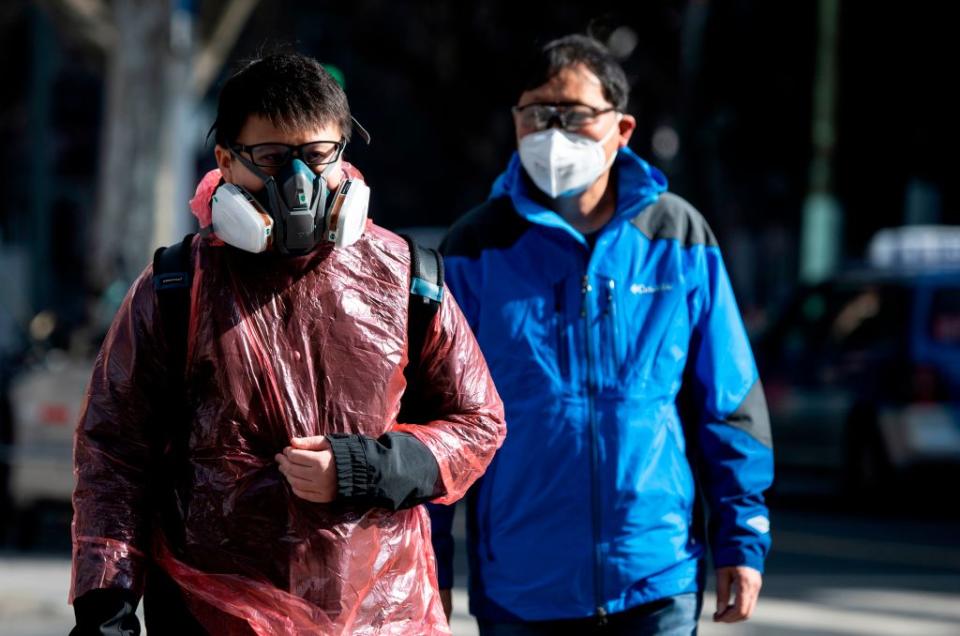Debate over disturbing new mode of coronavirus transmission
As the coronavirus death toll nears 1000 and shows no signs of slowing down, Chinese health experts have worryingly cast differing views on how the virus can spread.
On Saturday Zeng Qun, deputy head of the Shanghai Civil Affairs Bureau, said the virus was able to be transmitted through aerosol transmission.
“Aerosol transmission refers to the mixing of the virus with droplets in the air to form aerosols, which causes infection after inhalation, according to medical experts,” he said at a media briefing.
Experts explained this differs to direct transmission where infection is caused by inhalation of air close to a patient who sneezes and coughs.

Aerosols can travel much further, meaning aerosol transmission poses a greater threat than direct transmission.
But on Sunday Feng Luzhao, a researcher with the Chinese Centre for Disease Control and Prevention, said there was no evidence to suggest aerosol transmission was possible for the virus, the China Daily reported.
He said direct transmission was the most common form of transmission while contact transmission – when a person touches an object tainted with droplets containing the virus – was also possible.
The government urged residents to avoid gatherings, open windows to help with ventilation and residents should regularly disinfect their homes including door handles, toilets and tables.
The differing information delivered just one day apart has been a concern of residents within Hubei, the central Chinese province where nearly 30,000 people have contracted the virus and 871 people have died.

Top health officer in Australia calls for calm
Australia so far has 15 cases, including five in Queensland. And while the figure could grow further, Australia’s deputy chief medical officer has called for calm across the nation as a further 266 evacuees from Wuhan arrived on Sunday and were placed in quarantine near Darwin.
"I can categorically say there is no risk to the public," Professor Paul Kelly told ABC radio on Monday.
"If I had children in the Lutheran college close to the site I would have no hesitation in my kids going to school today and throughout the next two weeks."
Professor Kelly said the virus could not be spread by mosquitoes, adding that the same precautions would have been taken wherever the virus had originated.
"There's a very disturbing element of xenophobia here," he said.

"I'd just like to really reiterate the fact that this is not about Chinese people, it's about people in China and anyone who's been in China, in Hubei province."
The Department of Foreign Affairs and Trade says there are no current plans for further "assisted departure" flights.
Australian citizens or permanent residents returning from mainland China face a mandatory two-week quarantine process of self-isolation.
With AAP
Do you have a story tip? Email: newsroomau@yahoonews.com.
You can also follow us on Facebook, Instagram and Twitter and download the Yahoo News app from the App Store or Google Play.




